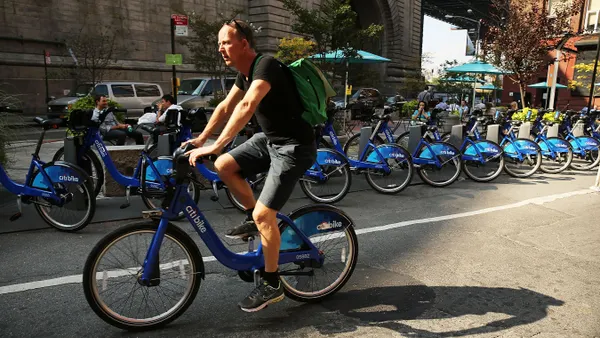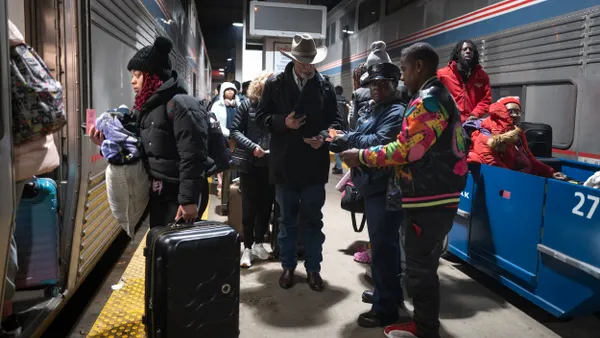Dive Brief:
- The Federal Highway Administration published a notice of proposed rulemaking on Feb. 21 to update the existing Highway Safety Improvement Program regulations. The updates aim to incorporate the Safe System Approach and align with the safety and equity priorities of the U.S. Department of Transportation’s National Roadway Safety Strategy.
- The proposal would require each state to perform a system-wide safety risk assessment and clarifies that each state’s strategic highway safety plan must include a safety assessment focused on vulnerable road users, such as pedestrians, cyclists or those using a personal conveyance.
- The FHWA also seeks through these new rules to streamline state reporting efforts while also requiring states to report and evaluate individual projects, programs and countermeasures.
Dive Insight:
Amid a decade-long increase in traffic fatalities, the U.S. Department of Transportation adopted the Safe System Approach in 2022, which focuses on safer roads, people, vehicles and speed along with post-crash care.
Nearly 43,000 people died in motor vehicle crashes in 2022, including more than 7,500 pedestrians. “We recognize that the current status of traffic safety in the U.S. is unacceptable, and we’ve adopted the Safe System Approach as the guiding paradigm to address roadway safety,” said Robert Ritter, FHWA associate administrator for safety, on a Monday webinar.
Under the new regulations, the FHWA proposes that states include representatives from underserved communities “to ensure that the needs of all road users are represented in the planning, implementation and evaluation of the [Highway Safety Improvement Program],” Karen Scurry, HSIP program manager, said on the webinar.
A Smart Cities Dive analysis of fatal pedestrian accident data showed that people of color and people in low-income communities are killed at a higher rate than other residents, even in communities with lower overall pedestrian death rates. Black or African American pedestrians are killed in traffic crashes at a rate nearly two times higher than White pedestrians. Hispanic or Latino pedestrians die at a rate 38% higher than the rate for White pedestrians.
Scurry also said the FHWA is proposing to add representatives from public health agencies “to emphasize that roadway traffic crashes are not only a traffic safety problem but also a public health problem.” In a February interview, former director of intergovernmental and strategic affairs at the Centers for Disease Control and Prevention John Auerbach said, “There’s a solid amount of evidence that shows that transportation has a significant impact on the health and well-being of the public.” Auerbach urged greater collaboration among health and transportation agencies.
In conclusion, Scurry said the proposed changes “would clarify provisions regarding the planning, implementation, evaluation and reporting of HSIPs that are administered in each state,” adding that “these changes would further strengthen and advance the safety and equity priorities of the DOT’s National Roadway Safety Strategy and assist us with making safety gains designed to eliminate fatalities and serious injuries on the nation’s roads.”











